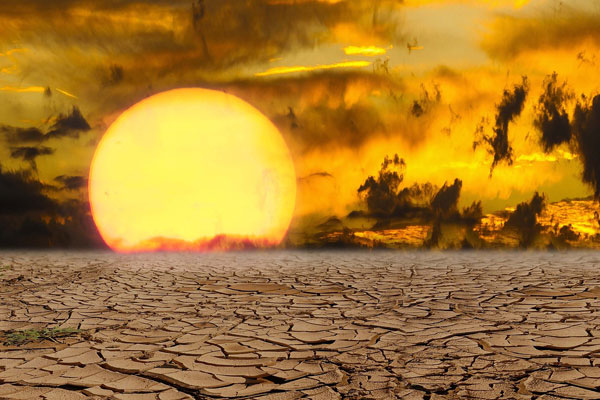Heat dome returns to Texas, exacerbating extreme temperatures and environmental threats

[Climate Change Desert. Photo Credit to Pixabay]
This summer, a heat dome driven by climate change, has returned to Texas, causing significant environmental and societal impacts reminiscent of last year’s second hottest summer on record.
A heat dome is a meteorological phenomenon where a high-pressure system traps heat in the atmosphere.
Warm air rises within the dome and is then pushed back down by the pressure, causing the area covered by the heat dome to become increasingly hotter.
Although heat domes typically only last only a few weeks, its effects can be devastating.
The Gulf of Mexico is experiencing significant warming due to this heat dome, exacerbating the situation.
As the water temperature rises, moisture is added to the atmosphere, contributing to the already high temperatures in Texas.
This added humidity intensifies the heat and can lead to severe weather patterns.
The heat dome has already resulted in fatalities, with an estimate of about a dozen people having succumbed to the extreme heat.
This year’s data shows worrying similarities to last year’s temperatures, indicating that this summer could potentially be just as hot or even worse, hotter than the previous year.
Last summer was the second hottest on record for Texas, and the prospect of enduring such extreme temperatures again is daunting for residents.
The extreme heat generated by the heat dome can also trigger natural disasters, particularly hurricanes.
One critical factor in hurricane formation is the warm temperatures of the water of the Gulf of Mexico.
As the Gulf heats up, it provides the necessary conditions for storms to develop into tropical cyclones, which can then intensify into hurricanes.
These hurricanes, which are strengthened by the warm waters, pose a significant threat and increase the likelihood of such events.
This year's heat dome is not only limited to the state of Texas.
It affects most of the eastern states in the United States, stretching from the Great Plains to Maine.
Texas and Florida, the states most impacted, experience the hottest temperatures, which gradually decrease as one moves away from the Southern Plains and the Southeast states.
The severe heat dome originated from Mexico, where powerful heat waves traveled northward into Texas, exacerbating the situation.
Human-induced causes of climate change is a significant contributor to the intensity and frequency of heat domes.
Studies point to a 1.5°C increase in global temperatures since the preindustrial era has intensified these events.
For instance, research on the 2021 heat dome in Canada concluded that such an occurrence would have been impossible without the influence of climate change.
This demonstrates how rising global temperatures have made heat domes more severe and frequent.
Climate change not only exacerbates heat domes but also affects daily life in numerous ways.
The effects of climate change are behind many weather phenomena that negatively impact human society.
The ongoing increase in global temperatures fuels more extreme weather events, putting lives and communities at risk.
Addressing these issues require urgent and sustained action.
Immediate steps must be taken to mitigate climate change to prevent further damage and reduce the occurrence of extreme weather events like heat domes.
Some steps that may be taken include the transition to renewable energy sources, improving energy efficiency, and implementing policies that reduce carbon emissions.
The return of the heat dome in Texas serves as a stark reminder of the urgent need to address climate change.
The extreme heat, potential for natural disasters, and the direct impact on human health underscore the importance of taking immediate action.
As the climate continues to warm, the frequency and intensity of heat domes are likely to increase, posing an even greater threat in the future.
By addressing the root causes of climate change now, we can work to mitigate these impacts and protect both the environment and public health.

- Taeeon Kim / Grade 7
- The Bement School

![THE HERALD STUDENT REPORTERS [US]](/assets/images/logo_student_us.png)
![THE HERALD STUDENT REPORTERS [Canada]](/assets/images/logo_student_ca.png)
